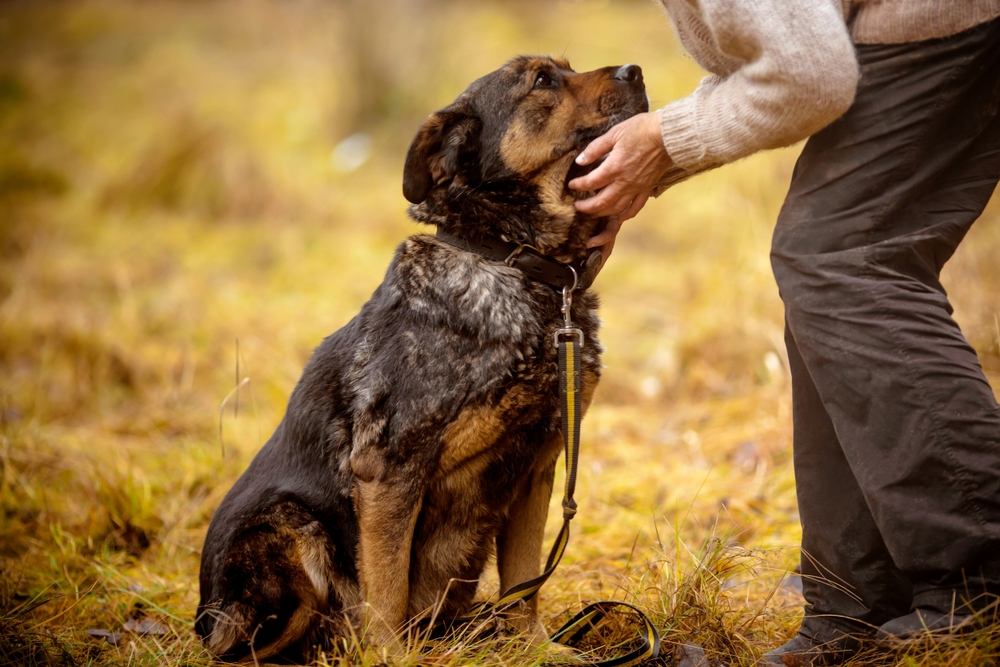A recent publication in Scientific Reports took an in-depth look at longevity in Rottweilers. The authors evaluated the health records of 7,185 Rottweiler dogs from Australia and reported that intact dogs lived 1-1.5 years longer than spayed or neutered dogs. The scientific study is part of a growing (but controversial) body of evidence on the potential health impacts of canine spay and neuter.
The effort to extend the lifespan of dogs
Dogs usually live 10-15 years, with smaller dogs living longer than larger breeds. A large analysis of longevity in 584,734 individual dogs in the UK reported the following:
- Purebred dogs lived 12.7 years on average, while mixed-breed dogs lived 12 years.
- Females lived 12.7 years on average and males lived 12.4 years on average (similar for purebred or mixed breeds).
- Smaller breeds lived longer than larger breeds. The authors determined longevity estimates for 155 breeds of dog (see Supplemental Table 3).
- Brachycephalic dogs with a “flattened” face (such as bulldogs and pugs) have shorter lifespans.
- Neuter status was not evaluated in this study.
Pet lovers frequently lament the relatively short longevity of dogs, wishing that they lived longer. To improve health and extend lifespan, many people invest in specialty foods, supplements, activity programs, exercise enclosures, and preventive healthcare for their dogs. In the United States, it’s common for pet owners to spay or neuter their dogs both for sterilization and for the perceived health and behavior benefits. However, this might work against their hopes.
Canine health and spaying and neutering
Previously, it was “common knowledge” that spaying or neutering a dog offered health benefits that helped to extend longevity. After all, dogs that are “desexed” do not develop diseases of the sex organs that were removed, nor diseases related to the sex hormones that those organs produced. These include pyometra and mammary tumors in females and benign prostatic hyperplasia and testicular cancer in males. Neutered males may also be less likely to roam in search of females in heat (which could put them at safety risks).
But what about the negative health impacts of spaying or neutering in dogs? Removing sex organs (ovaries and testes) during spay and neuter surgery deprives dogs of natural sex hormones such as testosterone, estrogen, and progesterone, which are integral to the growth, development, and functioning of many organs in the body — not simply the sex organs. So, the loss of sex hormones — especially at a young age — can detract from an animal’s lifelong health.
Research on health and longevity in dogs related to neuter status
As scientists began to study the influence of spay and neuter on dog health, the findings were surprising to many. We learned that Golden Retrievers have higher incidences of several joint disorders and cancers if they are neutered. Vizlas have a higher chance of developing cancer and fear of storms if neutered. Spaying and neutering may be related to increased aggression toward strangers and possibly cognitive dysfunction syndrome. Overall, removal of the sex organs and hormones changes various health risks. Some health problems are less common and some are more common after spay and neuter depending on various factors like breed, sex, age, and size. A review of the findings concluded that overall, desexing a dog results in a reduction in pyometra and mammary tumor risk in females, but an increased risk in both sexes and across breeds for cranial crucial ligament rupture, hemangiosarcoma, lymphoma, transitional cell carcinoma of the bladder, and obesity.
In terms of longevity, studies have reported various outcomes, with intact dogs living for a similar, longer, or shorter amount of time as dogs that were spayed or neutered. For example, a 2018 study reported that females lived longer if spayed but males lived slightly longer if left intact. Conflicting results between studies make it clear that the link between longevity and neuter status is complex. Factors influencing longevity include the dog’s size, breed, conformation, sex, neuter status, and the dog’s age at the time of neuter. Other factors such as the environment, preventive healthcare, and diet also likely play a role — as well as the methodology used to evaluate longevity.

The study of longevity in Rottweilers
A benefit of studying longevity in a single breed is to eliminate other variables such as size and breed. Records on the timing of spaying or neutering also allows evaluation of this variable. The study of longevity in male and female Rottweilers used an Australian electronic database. Males neutered before one year of age (n = 207) lived 1.5 years less than intact males. Females that were spayed before one year of age lived 1 year less than intact females. Including animals neutered before the age of 4.5 years produced similar results.
Evaluating dogs that were desexed after 4.5 years of age produced an interesting result. As expected, while all dogs were intact, their lifespan profiles were nearly identical. However, once spayed and neutered, the expected lifespan for both male and female dogs began to diverge with intact dogs having a longer lifespan. The results suggest that spaying and neutering shorten lifespan even when done later in life. A larger pool of individuals in this category would help to confirm the results.
The results are not surprising considering an earlier 2009 study of longevity in Rottweilers. That study was focused on long-lived dogs and based on registered Rottweilers in North America. The authors found that more females than males achieved exceptionally long lives (over 13 years). However, the “female advantage” to long life was lost if she was spayed in the first 4 years of life. In this breed at least, natural hormones appear to offer longevity benefits.
The benefits of sterilization that preserves hormones
While most studies only consider dogs that are intact and spayed or neutered, there is a third option. Hormone-sparing sterilization allows the dog to be sterilized while preserving natural hormones. This is achieved with a hysterectomy for females or a vasectomy for males. Hormone-sparing sterilization results in health benefits observed in intact dogs, but removes the possibility of pregnancy as well as pyometra in females (because the uterine tissue is removed).
Hormone-sparing sterilizations have become more common as “pet parents” learn about the risks and benefits of traditional spay and neuter. The first study to include comparisons of dogs who underwent hormone-sparing sterilization to intact and spayed/neutered dogs was recently completed. The authors reported that intact dogs and those sterilized with hormone-sparing procedures (vasectomy or hysterectomy) had reduced risk of general health problems, including both problematic and nuisance behaviors, as compared to spayed or neutered dogs. The length of time a dog kept its sex organs and the natural hormones they produce was associated with the length of its lifespan.
To learn more about hormone-sparing sterilization, take a look at our web pages:
- Hormone-sparing sterilization overview
- How spaying and neutering affect health
- Hormone-sparing sterilization procedures
- Identification of dogs who had hormone-sparing sterilization
- Use our Veterinarian Directory to find a veterinarian who can assist you in determining the best option for sterilization for your dog.



